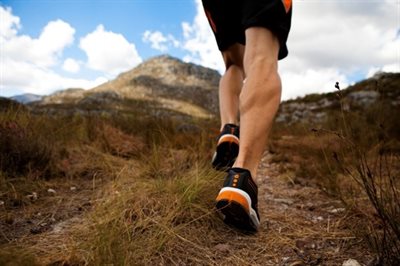The mechanisms of physical activity and exercise with chronic musculoskeletal pain - Pain Centre Versus Arthritis Themed Meeting

This meeting offered an opportunity to highlight this area of research from colleagues in the Pain Centre Versus Arthritis, University of Nottingham and more widely from our invited speaker Professor Rob Smeets Professor in Rehabilitation Medicine at Maastricht University
Professor Rob Smeets provided an excellent overview of his research investigating movement and activity in chronic pain. Patient fears and perceptions have been challenged with in vivo exposure interventions showing significant improvements especially around economic impact. Exposure interventions employing Multiple Treatment Reversal Design (ABC) in patients with diabetic neuropathy were also highlighted. The metabolic effects of physical inactivity were presented including the changes in metabolic health across a range of health conditions including OA by Professor Paul Greenhaff, University of Nottingham. The impact of Physical inactivity on non-inflammatory induced muscle wasting inducing a reduction in protein synthesis. These changes in insulin resistance and protein synthesis occur in relatively short time frames and have important implications for how we manage patients with exercise.
Matching exercise and treatment targets was the focus of a talk on whole body treatment for pain including mind-body exercise presented by Professor Weiya Zhang, University of Nottingham. The talk discussed matching the outcomes and to also consider the degree of central and peripheral abnormality whereby targeting exercise and specific pain phenotypes offers further opportunity to tailor the exercise to the outcomes of treatment. Thomas Bestwick-Stevenson presented work on the SALI study and how factors associated with ankle ligament injuries are being addressed, including looking at whether there are differences in the recovery and levels of pain in those who exercise and are physically active. The study also offers the potential to look at balance and strength as potential factors impacting recovery from ankle ligament injury.
The effects of OA on muscle function were presented by Dr Stephanie Smith, University of Nottingham. Her work demonstrates changes in muscle co-activation, strength and proprioception linked to decreased strength in patients with knee OA. These changes in muscle co-activation may act as a compensatory mechanism for muscle weakness and may potentially contribute to progression of the disease and are important to consider when designing strength exercise for patients with knee OA.
The bi-directional associations between Pain and frailty and the potential mediating effects of pain on associations between frailty and Central pain mechanisms (CMT) were presented by Wendy Chaplin, PhD Student, University of Nottingham. Frailty is associated with CMT however these associations might be not fully explained by pain intensity. Important implications include targeting interventions to central pain mechanisms to relieve pain and consequently reduce frailty. Research was presented by Dr Jakob Škarabot (Loughborough University) looking at the effects of pain on nervous system activity, in particular changes in motor firing patterns at the neuro muscular junction in knee OA. Pain, swelling and inflammation each may affect motor firing patterns and this research seeks critical mediators of altered muscle morphology in OA pain.
The need to better target exercise treatment to outcomes was highlighted by Dr Lianne Wood (NUH Hospital Trust) in her talk. Reporting of exercise interventions requires clear statement of treatment targets. Importantly, there is a need to develop program theories for exercise in chronic musculoskeletal pain to focus on the proposed mechanistic targets of the intervention. Finally, the question of whether exercise should be painful for patients with musculoskeletal pain was posed by Dr Ben Smith (Royal Derby Hospital). This talk highlighted the lack of attention given to whether pain during exercise delivery may be beneficial or just an unpleasant hinderance. Results suggest exercise into pain can have some benefits, and further study into this is required.